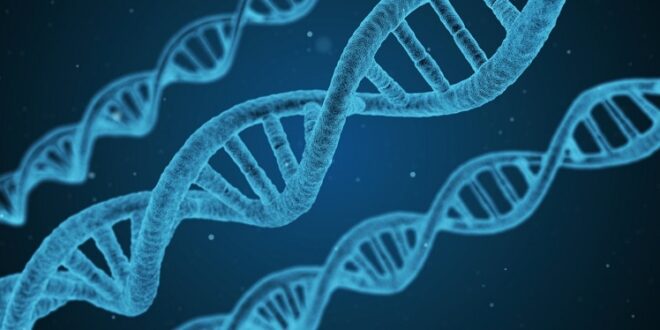Gene expression is an important scientific process. In order to use RNA-seq datasets like ROSALIND, you have to first have a strong understanding of DNA, genes, and gene expression. And that could be scary!
But don’t worry. Gene expression can seem like a complex topic – and it is – but that doesn’t mean it has to be explained in a complex way. Keep following our guide to gene expression with ROSALIND!
Background Understanding
In order to get to Gene expression, you first have to understand what a gene is. A gene is a genetic material that is passed down from parent to offspring hereditarily. This small piece of genetic code can be used to determine certain characteristics of the offspring.
The first discovery of these traits being passed down is credited to Gregor Mendel. Learn more about his history and influence here.
If you’re already someone with a high degree of biology knowledge, you might be confused as to why we’re explaining the basics. But ROSALIND is designed to work for those that have very basic knowledge of biology, making it a wonderful tool for those just stepping foot into the scientific world.
What Is Gene Expression?
Put into simple terms, gene expression is a two-step process where instructions already present in DNA are converted into a product. These products can be things like proteins that carry out the majority of the active functions of the cell.
The purpose of gene expression is to create products in response to a constantly changing environment. It functions as both an on/off switch and a regulator. It can be used to determine when to make proteins (or other molecules) and how many of those proteins need to be made.
The two-step process of transcription and translation is how gene expression makes those useful molecules. If you’re interested in other aspects of biology, biostatistics is transforming public health and becoming an increasingly important field.
Transcription
The first step is transcription. This is when the code, or the DNA, in the gene is copied. This copy is used to produce an RNA transcript known as mRNA (which stands for messenger RNA).
Now, what’s RNA you may be asking. RNA is chemically very close to DNA, but it has just one single strand of bases (or basic units of genetic instruction). Once the transcription is complete we move on to translation.
Translation
As the second step, translation takes the transcribed message (from the mRNA) to the ribosomes within the cell. Ribosomes are what make the proteins. The next part gets a bit more complicated so we’ll break it down again.
mRNA Reading Process
mRNA can only read three letters (or codons) at a time to the tRNA (or transfer RNA). Each of these codons relates to a specific amino acid (the basic parts that are used to make proteins).
tRNA Binding Process
After reading, the tRNA carries its specific amino acid to the ribosome. The tRNA will then temporarily bind itself on the mRNA. When this happens, the tRNA will “let go” of the amino acid it carries – allowing all the other amino acids to join together to form a chain.
The process will continue to repeat until the protein is formed. And that’s the basics of protein production AKA gene expression! Now let’s learn how to study this process.
What Is ROSALIND?
ROSALIND is an RNA-seq dataset specifically designed to analyze gene expressions. Understanding gene expression and analysis is especially important for those who are or wish to be scientists researching areas of oncology, immunology, regenerative medicine, drug discovery, and more. Anything that deals with experimentation between healthy and diseased states would find ROSALIND useful.
Its cloud platform allows scientists of almost any skill level to use the platform with ease. There’s no programming or bioinformatics needed to understand how to use ROSALIND. Same-day results on experiments are the result of powerful downstream analysis.
Just some of the amazing capabilities ROSALIND has to improve your experiments and discoveries are listed below.
- Capture metadata with NCBI BioSample attributes
- Covariate and batch corrections performance
- Gene filters and adjustable cut-off parameters
- Be publication-ready with downloadable figures and plots
- Real-time collaboration and results sharing
- Ability to re-use existing samples for your new experiments
- Meta-Analysis allows for pattern discovery
- Import NCBI Short Read Archive Public Data
You’re probably wondering How to Analyze Gene Expression with ROSALIND. Let’s find out!
How to Analyze Gene Expression With ROSALIND
ROSALIND provides a guided experience for gene expression analysis. Beginning an RNA-seq data analysis simply requires the creation of an experiment within the program and the capture of the experiment design.
Next, you’ll record details such as biological objectives and your analysis parameters with your sample attributes. You can begin with raw FASTQ files or use processed data that was generated by another analysis pipeline.
ROSALIND can take you through all of the steps. From verifying your quality control metrics through Quality Control Intelligence to moving beyond the bulky CSV files with a dashboard with all of that information available to more easily comprehend.
When you’ve finished your research it’s important to share and collaborate on that work with other scientists. ROSALIND Spaces allows scientist-to-scientist connection. This is achievable through “virtual data rooms” where released interactive datasets can be viewed from around the world.
What Else Should I Know?
Understanding gene expression isn’t as hard as you thought, right? Especially when we have programs like ROSALIND to do a lot of the heavy lifting these days. Who knows what amazing discoveries can be made with programs like these!
But it’s important to understand how things as tiny as genes can affect your health as well. Keep learning about health and science topics here on our website!
 HammBurg Be informed with latest news, reviews, entertainment, lifestyle tips, and much more.
HammBurg Be informed with latest news, reviews, entertainment, lifestyle tips, and much more.




